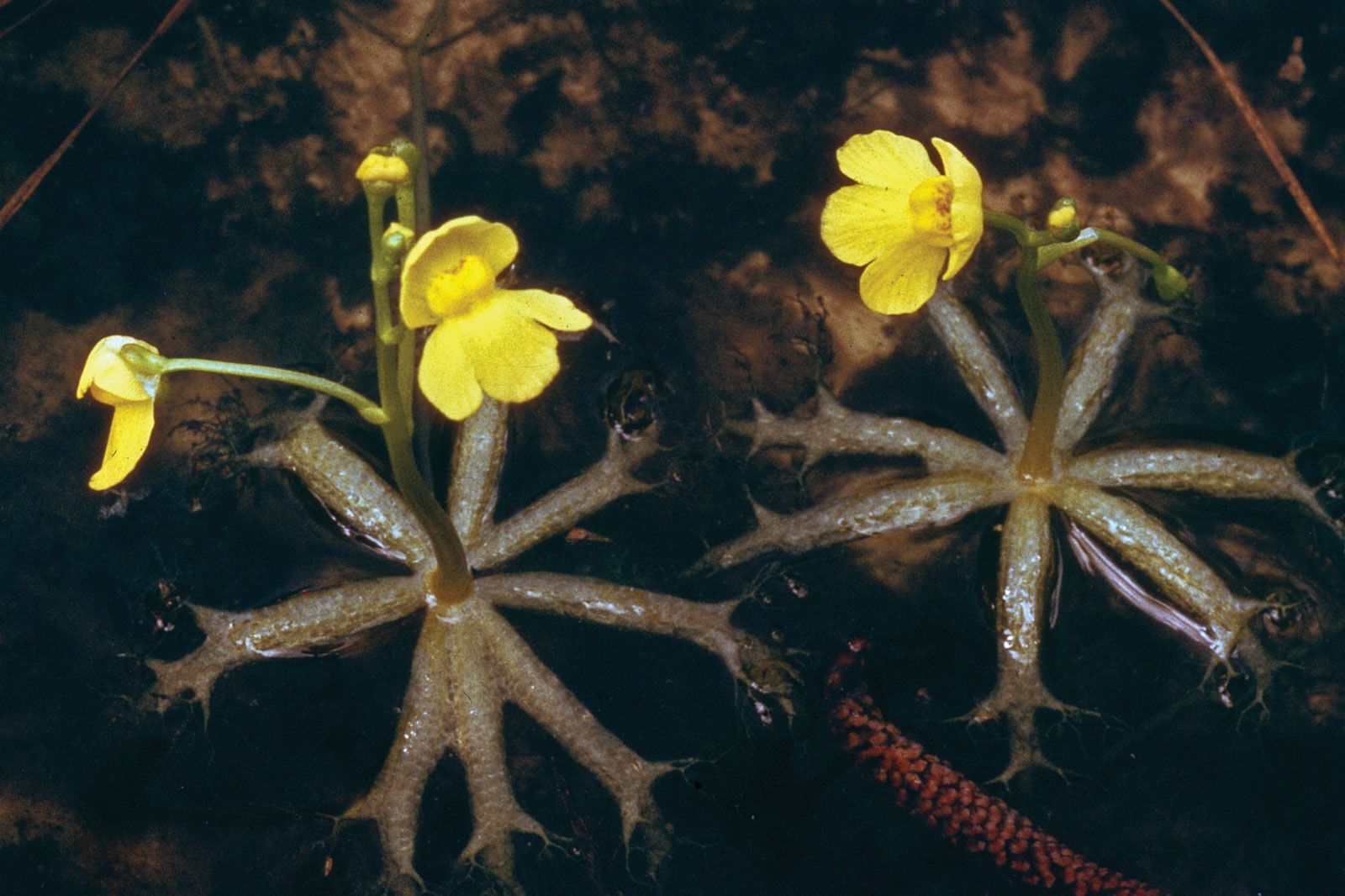
Bladderwort is a fascinating plant that often flies under the radar. Did you know that this seemingly delicate aquatic plant is actually a carnivore? Bladderworts use tiny bladder-like traps to capture and digest small aquatic creatures like insects and larvae. Found in freshwater environments around the world, these plants have evolved unique mechanisms to thrive in nutrient-poor waters. Their intricate trapping system works through a vacuum mechanism, making them one of the fastest plant movements known to science. Whether you're a botany enthusiast or just curious about nature's oddities, these 33 facts about Bladderwort will surely pique your interest.
What is Bladderwort?
Bladderworts are fascinating carnivorous plants that belong to the genus Utricularia. Found in aquatic and terrestrial environments, these plants have unique adaptations that make them stand out in the plant kingdom. Let's dive into some intriguing facts about bladderworts.
Unique Adaptations
Bladderworts have evolved some remarkable features to survive in their environments. Here are some of their unique adaptations:
- Bladderworts possess tiny bladder-like traps that capture prey.
- These traps are among the fastest in the plant kingdom, snapping shut in less than a millisecond.
- The bladders create a vacuum to suck in small aquatic organisms like protozoa and tiny crustaceans.
- Bladderworts can be found in both freshwater and terrestrial habitats.
- Some species have traps that function underwater, while others have traps that work in moist soil.
Feeding Mechanism
The feeding mechanism of bladderworts is both complex and efficient. Here's how they capture and digest their prey:
- The bladders have a door-like structure that opens inward.
- When prey touches the trigger hairs, the door opens, and the vacuum inside the bladder sucks the prey in.
- Digestive enzymes break down the prey, allowing the plant to absorb nutrients.
- The entire process of capturing and digesting prey can take just a few hours.
- Bladderworts primarily feed on microscopic organisms, but larger species can capture small insects.
Habitat and Distribution
Bladderworts are widespread and can be found in various environments around the world. Let's explore their habitats and distribution:
- Bladderworts are found on every continent except Antarctica.
- They thrive in nutrient-poor environments where other plants struggle to survive.
- Common habitats include ponds, lakes, marshes, and wet meadows.
- Some species are epiphytic, growing on other plants without harming them.
- Bladderworts can adapt to both acidic and alkaline conditions.
Reproduction and Growth
Bladderworts have interesting reproductive strategies and growth patterns. Here are some facts about their reproduction and growth:
- Bladderworts reproduce both sexually and asexually.
- They produce small, delicate flowers that are often yellow, purple, or white.
- Pollination is usually carried out by insects like bees and butterflies.
- Asexual reproduction occurs through fragmentation, where parts of the plant break off and grow into new plants.
- Some species can produce turions, which are dormant buds that survive harsh conditions.
Ecological Importance
Bladderworts play a significant role in their ecosystems. Here are some ways they contribute to their environment:
- Bladderworts help control populations of small aquatic organisms.
- They provide habitat and shelter for various microorganisms.
- Bladderworts contribute to nutrient cycling in aquatic ecosystems.
- They can improve water quality by reducing algae and other microorganisms.
- Bladderworts are indicators of healthy, unpolluted water bodies.
Interesting Species
There are over 200 species of bladderworts, each with unique characteristics. Here are some notable species:
- Utricularia vulgaris, also known as common bladderwort, is widespread in Europe and North America.
- Utricularia gibba, or humped bladderwort, is known for its small size and widespread distribution.
- Utricularia inflata, or swollen bladderwort, has large, inflated bladders and is found in the southeastern United States.
- Utricularia australis, or southern bladderwort, is common in Australia and has bright yellow flowers.
- Utricularia reniformis, or kidney-shaped bladderwort, is native to Brazil and has distinctive kidney-shaped leaves.
Conservation Status
While many bladderwort species are abundant, some face threats from habitat loss and environmental changes. Here are some facts about their conservation status:
- Habitat destruction and pollution are major threats to bladderwort populations.
- Some species are listed as endangered or vulnerable due to their limited distribution.
- Conservation efforts include protecting wetland habitats and reducing pollution to ensure the survival of bladderwort species.
Bladderwort: Nature's Underwater Marvel
Bladderworts are fascinating plants with unique adaptations. They thrive in aquatic environments, using their tiny bladder traps to capture prey. These plants don't just survive; they flourish in nutrient-poor waters by feeding on small aquatic creatures. Their rapid trapping mechanism is one of the fastest in the plant kingdom, showcasing nature's ingenuity.
Bladderworts also play a crucial role in their ecosystems. They help control insect populations and contribute to the health of aquatic habitats. Their presence indicates a balanced and thriving environment.
Understanding bladderworts gives us insight into the complexity and beauty of nature. These plants remind us that even the smallest organisms have significant roles. Next time you're near a pond or wetland, take a moment to appreciate these incredible plants. Their story is a testament to the wonders of the natural world.
Was this page helpful?
Our commitment to delivering trustworthy and engaging content is at the heart of what we do. Each fact on our site is contributed by real users like you, bringing a wealth of diverse insights and information. To ensure the highest standards of accuracy and reliability, our dedicated editors meticulously review each submission. This process guarantees that the facts we share are not only fascinating but also credible. Trust in our commitment to quality and authenticity as you explore and learn with us.
